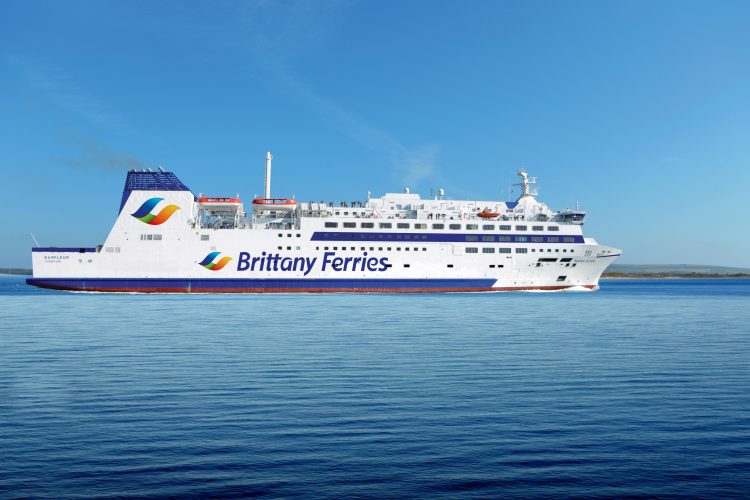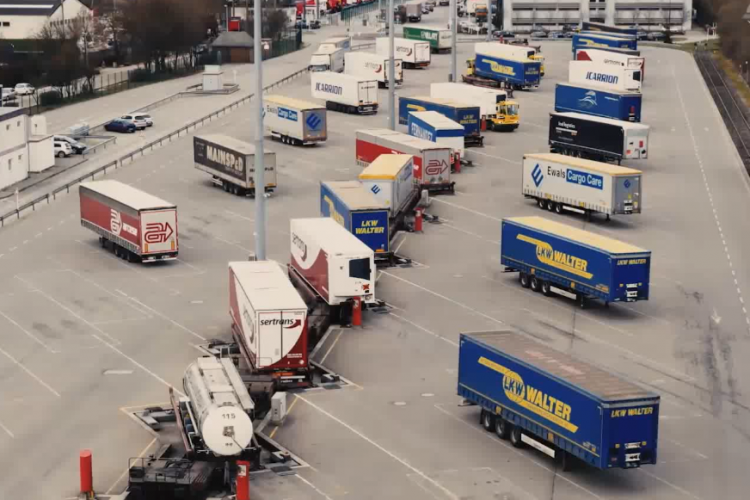Brittany Ferries gives green light to Cherbourg-Bayonne rail link
Brittany Ferries has given the go-ahead to a new rail-freight link between Cherbourg and Bayonne. The ferry company first announced the rail project back in February 2020, shortly before the COVID-19 health crisis hit, forcing a reduction in ferry services for nearly two years. But while the project—which Brittany Ferries deems strategic—was delayed, it was never cancelled.
During the pause, Brittany Ferries worked with French rail network operator SNCF Réseau and the Ministry for Ecological Transition to determine the routing for the new service, which will provide daily return journeys between Cherbourg and Mouguerre. Following a study into the modification of four railway tunnels on the Atlantic corridor route to allow the lowest available wagons to pass through, a framework agreement was signed, allowing the project to enter its concrete development phase.
With support from the State, Europe, and the regions of Normandie and Nouvelle Aquitaine, Brittany Ferries will open the ‘rail motorway’ linking the port of Cherbourg to the European Freight Centre at Mouguerre, near Bayonne, thereby connecting Spain to the UK and Ireland via the French railway network.
The launch of the new service, initially planned for 2022, is now expected by mid-2024.
Jean-Marc Roué, Brittany Ferries’ President said:
“A few days ago I gave the green light, formally committing Brittany Ferries to the various partners of the Cherbourg-Mouguerre rail project. As we enter this new phase, with the signing of the framework agreement between Brittany Ferries and SNCF Réseau, we can now secure the train slots for our services for the first five years of operation.
“Thanks to the support of the Ministry of Transport in the governments of Édouard Philippe and Jean Castex, under the presidency of Emmanuel Macron, we are finally able to make these ‘rail motorways’ a reality. During the five-year presidency, the French executive has shown strong and unwavering support for modal shift.
“Shifting freight from road to rail is something that many have talked about. But with this President of the Republic, it’s become a reality, forming part of our recovery plan. I welcome these political decisions which accelerate the future of low-carbon freight transport.”
Minimising transport’s environmental impact
To meet the needs of hauliers and logistics companies who wish to reduce harmful emissions and greenhouse gases, Brittany Ferries will diversify its freight offer, by offering a combined transport service for unaccompanied trailers along the French Atlantic Coast. The new link will form a natural extension of Brittany Ferries’ existing sea routes linking Cherbourg to Ireland and the UK, cutting the number of lorries transiting France by road by around 25,000 per year. Brittany Ferries will operate and sell the new service, effectively becoming a rail operator.
The next steps
Planning for rail movements using the French rail network is now underway.
The next phase will comprise the construction of two rail freight terminals in Cherbourg and Mouguerre, and the acquisition of wagons and specialised loading equipment for the Lohr Railway System which has been selected for the project.
Ports de Normandie, in its capacity as an investor, and the Port of Cherbourg in its capacity as a future operator, are also involved in planning for the next phase of the project. The first step is to organise a preliminary consultation with the residents of Cherbourg. The Normandy part of the project has received the support of Europe, the Normandy Regional Council, the Manche department, and the Communauté d’agglomération du Cotentin.
Brittany Ferries meanwhile will work closely with the Communauté d’agglomération du Pays Basque (CAPB) and the Nouvelle-Aquitaine region to carry out public consultation in Bayonne. The company has initiated discussions with the CAPB in order to acquire land for the Mouguerre rail freight terminal. In addition, a consortium comprising Mouguerre transport operators, the CAPB and Brittany Ferries has been formed to respond to a European Union call for proposals under the Connecting Europe Facility, which aims to develop new multimodal platforms.
Main characteristics of the ‘rail motorway’
- A rail service with sea connections linking Poole, Portsmouth and Rosslare to Cherbourg, allowing seamless transport of unaccompanied trailers from Ireland and UK to the Iberian Peninsula and vice versa.
- A 970km rail journey replacing a 920km road journey
- A regular year-round service, with one daily return journey, six to seven days per week, operated by two trains:
- Each train is composed of 21 MODALOHR UIC wagons with double pockets, allowing 42 trailers to be transported. Trailers are rolled on and off using specialised horizontal handling equipment.
- Parts of the route are not currently electrified. Initially the trains will be hauled by diesel locomotives, but in the future these could be replaced by dual-mode locomotives, further reducing emissions.
- From 2024 trains will be routed via Saintes, then from 2026 via the Poitiers-Angoulême-Bordeaux mainline.
- High service reliability and punctuality will foster customer loyalty.
- Journeys have been timetabled to connect with ferry arrival and departure times, whilst also avoiding periods of peak road traffic in Cherbourg.
The southbound service will depart Cherbourg at 19:15, arriving in Bayonne/Mouguerre the following day at 11:00. The northbound service will depart Bayonne/Mouguerre at 19:26, arriving at Cherbourg the following day at 11:08.
The service will be available to customers of all Cherbourg ferry operators, as well as logistics companies based in the wider Cherbourg area.
Modalohr railway wagons for sustainable transport
Founded over 50 years ago, the Alsace-based LOHR group offers its customers transport systems that meet the needs of an increasingly environmentally-aware transport sector.
Modalohr wagons combined with fixed equipment at terminals allow rapid and secure loading and unloading of semitrailers. Since 2003 this French technology has allowed more than two million trucks to be shifted from European roads to railways, cutting carbon dioxide emissions by more than 2 million tonnes. Each time a semitrailer is transported over 1000km by rail instead of road, negative externalities such as accidents, noise, congestion and emissions are reduced by €800.
François Lhomme, CEO Lohr Group said:
“We’ve been eagerly awaiting the launch of this emblematic and ambitious project. It will allow Brittany Ferries to extend its services along the Atlantic Coast using Modalohr wagons to carry trailers.
“The project was announced along with two other new rail motorways by Prime Minister Jean Castex in July 2020. It was then backed by Minister for Transport Jean-Baptiste Djebbari. This has allowed us to relaunch industrial production.
“We’re proud and happy that Brittany Ferries has selected our Modalohr technology for this project, recognising our excellence and know-how. The project will contribute to the Government’s ambition to double rail freight’s modal share by 2030, from 9 to 18 per cent.”
-Ends-
For images please visit https://brittanyferriesnewsroom.com/image_category/multimodal/
About Brittany Ferries:
Brittany Ferries was conceived in 1972, starting life as a freight-only service on 2nd January the following year. The first sailing linked Roscoff in Brittany with Plymouth in the South of England and carried a cargo of artichokes and cauliflowers. Since then the company has progressively launched, then strengthened shipping routes. Today millions of passengers and businesses transporting goods by sea across the so-called Atlantic Arc (France, UK, Spain and Ireland) rely on the links forged through six decades of operation. In addition to cutting congestion and emissions on busy roads, these motorways-of the sea have helped enrich local communities, creating jobs and nurturing international tourism.
More details here: https://corporate.brittany-ferries.com/en/press.aspx
Key figures (2020):
- Revenue: €202.4 million (€469 million in 2019)
- Fleet renewal: Four new vessels on the horizon, two powered by LNG entering service in 2022 and 2023; two LNG-hybrid powered ships arriving in the years that follow
- Employment: 2,474 employees, including 1,600 seafarers (full-time equivalent)
- Passengers: 752,102 in 2020 (2,498,354 in 2019)
- Freight: 160,377 in 2020 (201,554 in 2019)
- 12 vessels connecting France, the United Kingdom, Spain and Ireland, via 14 maritime routes
- 12 ports: Roscoff, Saint-Malo, Cherbourg, Caen, Le Havre, Plymouth, Portsmouth, Poole, Cork, Rosslare, Santander, Bilbao.
- Tourist impact: 231,000 unique visitors to France, generating 2.6 million overnight stays in 2020 (857,000 in 2019 with 8.7 million overnight stays in 2019)
 News
News



